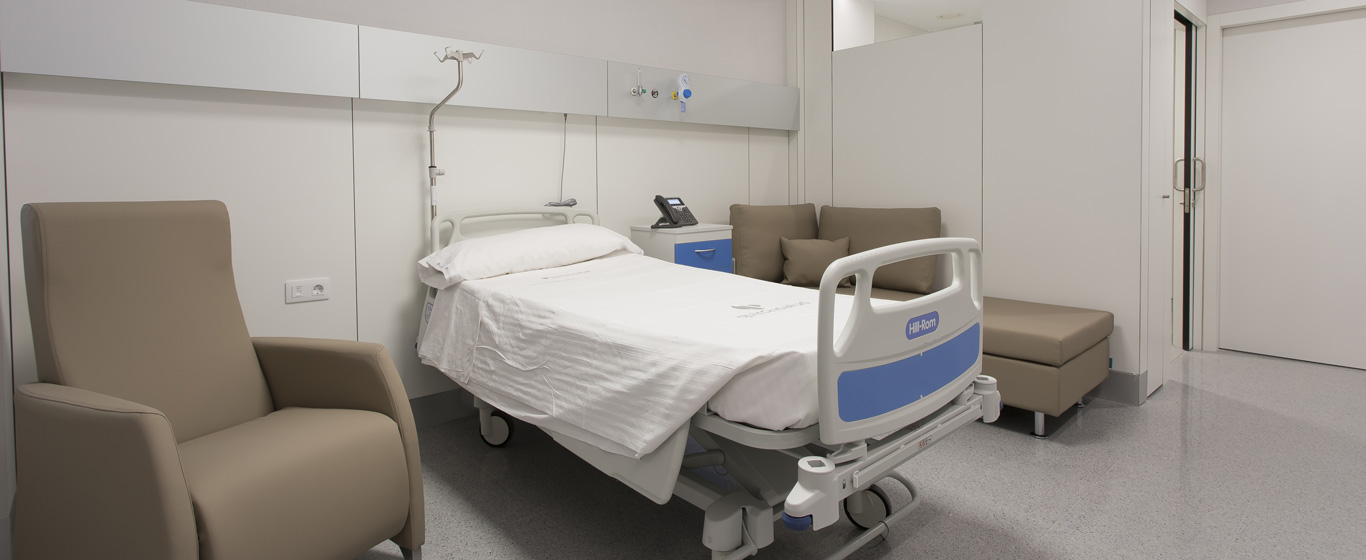Scintigraphy
Scintigraphy is a non-invasive diagnostic test that produces images of the inside of the body. In this nuclear medicine technique, a small amount of radioactive material is used to visualize the structure and function of organs.

General Description
Scintigraphy is a non-invasive test used in nuclear medicine to obtain images of the structure and function of the internal organs. To achieve this, a drug (radiotracer) with a small amount of radioactive material is administered. When it decomposes, it emits gamma rays. This radiation is collected by a device called a gamma camera, which generates images that are then processed by a computer.
The radiotracer used in scintigraphy consists of a radioactive substance attached to a specific molecule. Depending on the organ to be studied, both the molecule and the radioactive material vary, as the goal is for the substance to accumulate in a specific area so it can be observed in detail. Generally, tissues with the highest radioactive activity are those affected by some form of pathology:
- Hepatosplenic scintigraphy: colloidal sulfur labeled with 99mTc.
- Thyroid scintigraphy: 99mTc pertechnetate or sodium iodide.
- Brain scintigraphy: iodinated human serum albumin, technetium exametazime, or technetium bicistholate.
- Bone scintigraphy: polyphosphates labeled with 99mTc, technetium oxydronate, technetium propanodicarboxydiphosphonate, samarium lexidronam, or technetium medronate.
- Cardiac scintigraphy: human albumin, technetium-labeled pyrophosphates, or thallium chloride.
- Bone marrow scintigraphy: albumin colloids with 99mTc or nanocolloids.
- Hepatic scintigraphy: filate and technetium, colloidal rhenium sulfur, or technetium macrocolloids.
- Pulmonary scintigraphy: technetium-labeled macroaggregates of albumin or krypton generator.
- Renal scintigraphy: technetium pentetate or sodium iodohippurate.
- Angioscintigraphy: technetium pyrophosphate.
- Lymphoscintigraphy: colloidal sulfur and technetium, colloidal rhenium sulfur, technetium macrocolloids, or sulfur colloidal nanocolloids.
Depending on how the images are taken, there are two types of scintigraphy:
- Static acquisition scintigraphy: a single image is obtained from each angle, so when combined, a three-dimensional view can be achieved. This type of test is called SPECT-CT.
- Dynamic acquisition scintigraphy: images are taken from different angles and at multiple moments, with an established time interval.
Scintigraphy is used in various specialties to detect a wide range of diseases. Its most common use is to detect cancerous tumors or cardiac ischemia.
When is it indicated?
Scintigraphy is used to diagnose alterations and pathologies as well as to monitor their progression, particularly to check whether the treatment applied is working. This test is indicated for:
- Detecting cancerous tumors in various organs such as bones, thyroid, kidneys, or lungs.
- Checking heart function, blood flow behavior, or assessing the strength of the heart muscle.
- Observing the thyroid gland and determining whether there are any functional or structural disorders.
- Assessing lung function and the state of blood flow in the lungs.
- Evaluating kidney function and determining if there are obstructions or infections.
- Monitoring cancer after surgery or treatments with radiation or chemotherapy.
- Checking the condition and function of transplanted kidneys.
How is it performed?
Before starting the test, the corresponding radiopharmaceutical is administered, and to ensure it is evenly distributed throughout the body, it is common to wait about an hour before beginning the procedure. The drug is usually injected into a vein in the arm, although sometimes it is given orally or by aspiration.
For the study, the patient lies on a stretcher wearing a gown provided by the medical center. The area to be studied is positioned inside the device, which is usually circular and has two acquisition heads. Some models remain static while taking the images, while others move around the patient. To avoid distortion, it is necessary to remain still during the test, although it may be necessary to change positions.
Risks
Scintigraphy is a test that does not pose risks to health nor cause side effects, as the radiation administered is minimal. However, it is contraindicated during pregnancy and breastfeeding because this small amount of radioactive material can affect fetal and infant development.
In rare cases, allergic reactions such as itching or hives may occur due to the radiopharmaceutical.
What to expect from a scintigraphy
Scintigraphy is an outpatient study that does not require hospitalization or post-test rest. It is recommended to wear comfortable clothes and avoid jewelry or metal objects, as they cannot be brought into the testing room.
Before the scintigraphy procedure, an informed consent must be signed. Then, the radiopharmaceutical is administered. Since it is typically injected, there may be slight discomfort, and sometimes a feeling of heat or cold as the compound is absorbed. Other than this, the test is not painful. After about an hour, the patient lies on a stretcher and is placed in the gamma camera, which may cause some individuals to feel claustrophobic. While remaining still during the procedure is essential, the doctor may ask for position changes to obtain more accurate images.
The duration of a scintigraphy varies between 30 minutes and several hours, depending on the organ being studied. For example, a thyroid scintigraphy lasts around one hour, while a bone scan may take up to three hours.
After reviewing the images, the nuclear medicine specialist writes a report with the results, which is explained to the patient in a consultation several days after the test.
Specialties in which scintigraphy is requested
Scintigraphy is performed in the field of nuclear medicine at the request of oncology, traumatology, nephrology, urology, digestive system, neurology, or endocrinology.
How to prepare
Generally, no specific preparation is needed for scintigraphy, although depending on the medication the patient is taking and the organs to be studied, the specialist will provide specific instructions before the appointment.
In some cases, such as thyroid or gastric emptying scintigraphy, it is necessary to fast for at least six hours before the test.
To facilitate the elimination of the radiopharmaceutical, it is recommended to drink plenty of water on the day of the test. Additionally, it is advised to suspend breastfeeding for the 48 hours following the test and limit contact with pregnant women and babies.















































